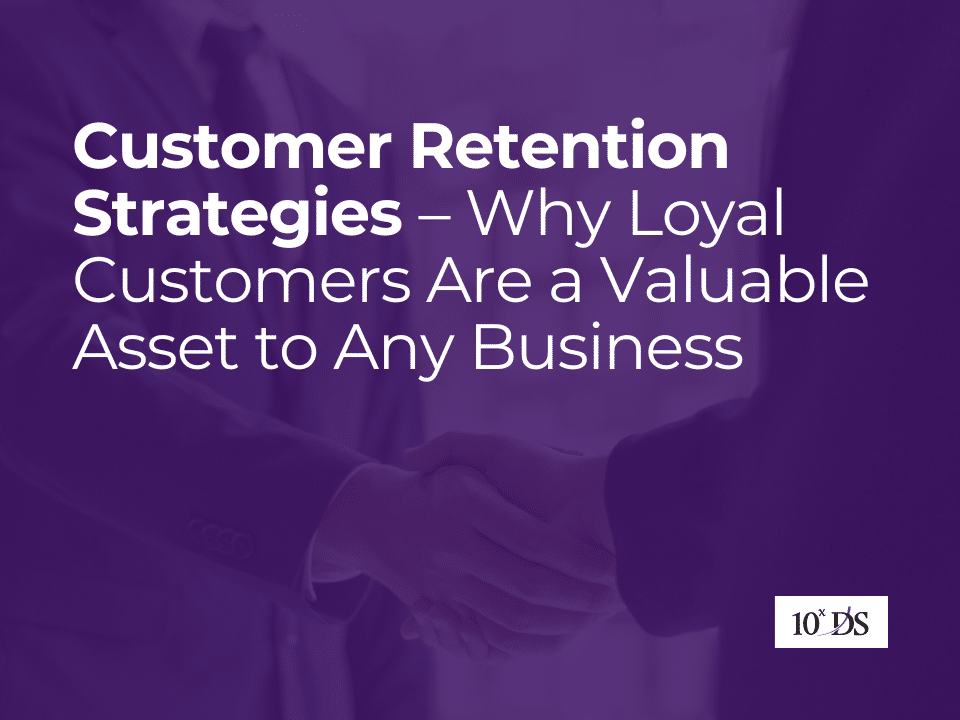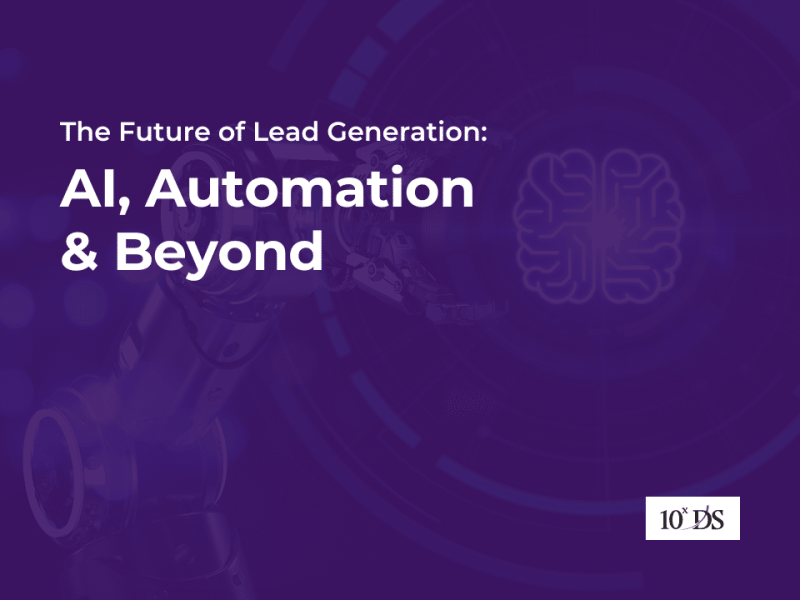
Customer Retention Strategies – Why Loyal Customers Are a Valuable Asset to Any Business
Imagine a customer who has been using a music streaming service for several months. Over time, they begin to feel that the song recommendations are repetitive, and the user experience is becoming stale. Additionally, the app starts displaying more ads or limiting key features. At the same time, a competing service enters the market offering a promotional deal, improved sound quality, and a more tailored interface. Finding the alternative more appealing, the customer decides to cancel their current subscription and switch to the new provider. This scenario highlights a case of poor customer retention—the original service failed to adapt to the customer’s evolving expectations, leading to a loss of loyalty and business.
Customer retention refers to a business’s ability to keep its existing customers engaged and satisfied so that they continue purchasing from the same company instead of switching to competitors. It is not just about repeat purchases but about maintaining a positive relationship that motivates customers to stay loyal over time.
Customer retention would involve actions and strategies in the above case that keep that user loyal —such as improved recommendation algorithms, exclusive playlists, ad-free trial extensions, or engaging user experiences. A company that focuses on retention actively listens to customer feedback, continually improves their offering, and provides ongoing value so that customers have little reason to leave. Retention is therefore not a one-time act but a continuous effort to build and maintain strong, trust-based relationships that last over time.
Why Should Customers Be Retained?
Customer retention is essential for sustainable business growth, primarily because keeping existing customers is significantly more cost-effective and strategically sound than constantly chasing new ones. Studies show that acquiring a new customer can cost five to seven times more than retaining an existing one due to the heavy investments required in advertising, promotions, sales funnels, and onboarding. Moreover, new customers often come with uncertainty—they are unfamiliar with the brand, need to be educated about the product, and may take time to develop trust.
In contrast, retained customers already have a relationship with the business. They understand the value, require less support, and are more likely to make repeat purchases and try new offerings. Loyal customers also tend to spend more over time and serve as advocates by referring others, essentially providing free word-of-mouth marketing. Furthermore, retention brings revenue stability, which is critical in times of market volatility. Rather than being at the mercy of changing acquisition costs or ad platform algorithms, businesses that focus on retention build a reliable revenue stream and a strong customer base that can weather economic downturns. In essence, while acquisition is necessary for growth, retention is what sustains and scales that growth efficiently and profitably.
Retaining customers is not inherently easy and requires well-planned Customer Retention strategies to be successful. While a satisfied customer might return once or twice, long-term loyalty doesn’t happen by accident—it must be earned through consistent value, personalized experiences, and ongoing engagement. With increasing competition and evolving customer expectations, even minor gaps in service, quality, or communication can lead customers to switch to competitors. That’s why businesses need clear, intentional Customer retention strategies that focus on understanding customer needs, building relationships, and proactively addressing issues. In short, customer retention is a deliberate effort, not a passive outcome.
1. Excellent Customer Service:
Exceptional customer service is one of the most fundamental and effective customer retention strategies. When customers experience prompt, courteous, and effective support, they are far more likely to return. People remember how they are treated more than the product itself, especially when they encounter an issue. Great customer service includes timely responses, problem resolution, and even proactive follow-ups to ensure satisfaction. Businesses that train their support teams to listen actively, show empathy, and go the extra mile often develop long-term customer loyalty. Brands like Zappos are known for their legendary service—support representatives are empowered to make decisions that help the customer, even if it means sending them to a competitor. Such memorable experiences lead to strong word-of-mouth and high customer retention rates.
2. Loyalty Programs:
Loyalty programs are designed to reward customers for repeat business and long-term engagement. These programs often include point systems, tiered memberships, exclusive discounts, and special perks for loyal customers. They encourage users to return frequently and spend more to earn rewards. A well-designed loyalty program can foster a sense of exclusivity and appreciation, making customers feel like valued members rather than just another sale. For example, Starbucks Rewards allows customers to earn points with each purchase, which can be redeemed for free drinks and food. It also provides personalized offers based on purchase behaviour, enhancing the perceived value of staying loyal. When implemented correctly, loyalty programs can increase both the frequency and value of customer transactions while building emotional connections with the brand.
3. Personalized Experiences:
In today’s data-driven world, customers expect businesses to understand their needs and tailor experiences accordingly. Personalization involves using customer data—like past purchases, browsing behaviour, and demographics—to offer relevant products, content, or messages. This can include personalized email marketing, product recommendations, targeted promotions, and custom user interfaces. Brands that make customers feel known and valued see higher engagement and retention. Amazon is a leader in personalization, offering curated shopping experiences that adapt to each user. When customers receive content that feels relevant and timely, they’re more likely to engage repeatedly. Personalization enhances satisfaction, reduces friction in the buying journey, and significantly boosts customer lifetime value by making the experience more convenient and enjoyable.
4. Regular Communication:
Maintaining ongoing communication with customers keeps a brand at the top of their minds and builds trust over time. Effective communication isn’t just about pushing products; it’s about providing value through updates, helpful content, or personalized messages. Regular newsletters, email marketing, SMS alerts, and app notifications are common channels for this purpose. However, the key is to be consistent without overwhelming the customer. For instance, Sephora uses email not only to promote products but also to share beauty tips, tutorials, and birthday surprises. This creates a richer relationship that goes beyond transactions. By staying in touch regularly, companies can nurture the relationship, increase engagement, and remind customers why they chose the brand in the first place.
5. Onboarding Programs:
A smooth and informative onboarding experience can significantly impact a customer’s likelihood to stay with a product or service. Onboarding helps new customers understand how to use a product effectively, ensuring they quickly see its value. This can include guided tutorials, setup checklists, welcome emails, and dedicated customer support. SaaS companies like Canva excel at onboarding by offering interactive walkthroughs and helpful prompts that guide new users step by step. A good onboarding process reduces confusion and frustration, which are key reasons for early churn. When customers feel confident in using a product and achieve early success, they are more likely to stick around, engage more deeply, and become long-term users.
6. Consistent Product or Service Quality:
Consistency builds trust. When customers know they can rely on a business to deliver the same high-quality product or service every time, they are more likely to remain loyal. In contrast, even one bad experience can drive a customer away if expectations are not met. Quality assurance, regular product testing, and soliciting user feedback are critical to maintaining consistency. Apple is a prime example of a brand that emphasizes consistent quality in its hardware, software, and support ecosystem. Customers return year after year because they know what to expect. Consistency not only keeps existing customers satisfied but also strengthens a brand’s reputation, making it more attractive to new customers as well.
7. Gathering and Acting on Feedback:
Collecting customer feedback is more than just a courtesy—it’s a strategic necessity for retention. Feedback helps businesses understand what’s working and where improvements are needed. However, it’s not enough to simply collect feedback; companies must also act on it. Tools like surveys, review platforms, and customer interviews can uncover pain points and preferences. For example, Slack frequently implements user suggestions into its updates, which shows customers that their opinions matter. This responsiveness builds trust and makes customers feel involved in the brand’s growth. A continuous feedback loop enables ongoing improvement, demonstrates customer appreciation, and fosters loyalty by showing that the company truly cares about its users’ experience.
8. Building a Community:
Creating a customer community transforms individual relationships into a collective brand loyalty. Communities offer a platform for customers to connect with one another, share experiences, and engage with the brand on a deeper level. These can be built through forums, social media groups, brand ambassadors, or user events. When customers feel they’re part of a larger movement or tribe, they develop emotional connections that go beyond the product itself. Peloton, for instance, has created a strong community of fitness enthusiasts who motivate each other through social features, leaderboards, and group challenges. This sense of belonging increases brand engagement and retention, as customers are more likely to stay where they feel included and supported.
9. Customer Education:
Educating customers helps them get the most value from a product, which in turn increases satisfaction and loyalty. Education can take many forms—knowledge bases, blogs, webinars, videos, or even one-on-one training. The goal is to reduce friction and help users achieve success with your product or service. HubSpot’s Academy is a great example, offering in-depth courses and certifications that empower users to maximize their use of HubSpot tools. Educated customers are more confident, make fewer support requests, and are more likely to see long-term value in staying with the brand. Customer education also positions the brand as a trusted expert, further reinforcing loyalty and credibility.
10. Proactive Customer Support:
Proactive support involves anticipating customer needs and addressing issues before they escalate. Instead of waiting for customers to complain, companies monitor usage patterns and reach out when they notice something might be wrong. This can include alerts about unusual activity, reminders, or suggestions for better product usage. For instance, Dropbox notifies users when they are nearing storage limits and offers upgrade options or space-saving tips. Proactive support prevents problems, saves customers time and frustration, and shows that the company is attentive. This type of thoughtful service increases trust and makes customers feel valued, thereby enhancing satisfaction and long-term retention.
Conclusion
In today’s highly competitive market, customer retention is not just a growth strategy—it’s a survival necessity. While attracting new customers is important, retaining existing ones delivers far greater long-term value at a lower cost. Loyal customers are more likely to make repeat purchases, refer others, and remain resilient during price changes or market shifts. Businesses that focus on building strong relationships, delivering consistent value, and actively responding to customer needs are far more likely to sustain success. Ultimately, retention transforms one-time buyers into lifelong brand advocates, creating a stable foundation for both profitability and long-term growth.
Talk to our experts to learn more.


